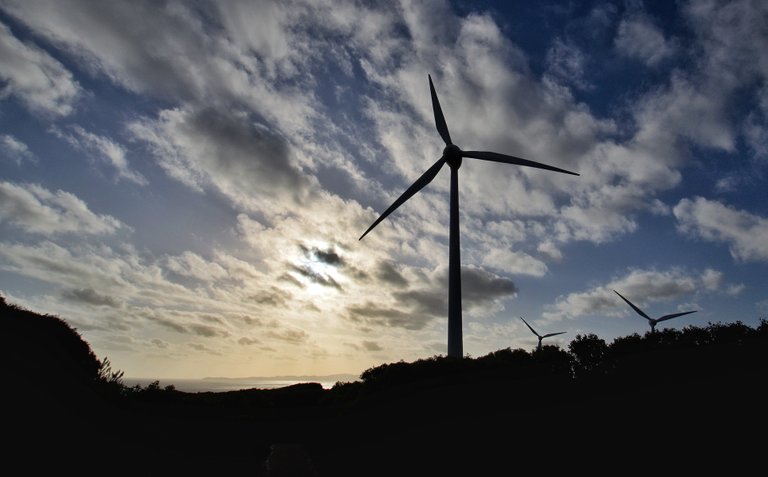The Voice of the Wind - Heavenly Haiku



This picture made me think about how structures interact with the environment, and the psychological effect this has on the observer.
For me, this picture engendered a certain bleakness, which definitely came through in the Haiku.
I do not find the implications of wind turbines bleak at all, in fact exactly the opposite as I see renewable energy as a solution to a major problem. But for some reason, any structure like this that encroaches on nature seems to elicit this emotional response in me.
It is interesting to notice these blips of logic when it comes to the artistic muse. So often great poetry comes from the soul, or if you're more scientifically inclined, the subconscious. Being able to tap into this is the soul-food of the creative writer. The core of creativity.
This type of thing really inspires me to notice how I perceive the world, and the way in which this influences my writing.
This haiku attempts to capture what Japanese Haiku masters call Kigo (季語):
an explicit or implicit reference to a season, that defines the time of the year in which the haiku is composed.
Along with Yūgen (幽玄):
a sense of wonder and mystery representing the state of mind produced by the inexplicable fascination of things, the feeling of an 'other' universe, full of mysterious unity.
The haiku follows the model of the Mizu No Oto - Haiku Contest, where a picture is used to prompt a haiku.
The Mizu No Oto - Haiku Contest (linked above) contains a fantastic tutorial on the traditional aesthetics and technique of haiku, I recommend checking it out for a master class in that form of poetry.
In this haiku I have tried to adhere to the ichibutsu jitate stylistic model, which consists of presenting one unified scene. The imagery in the poem meshes together to form a whole, in this case commenting on the scene in the picture.
To read more about the aesthetics of true haiku, and the difference between haiku and senryu, please check out my recent post:
Haiku Vs Senryu - The Aesthetics of Form
The image used in this post is creative commons licence, linked to credit beneath the picture. If you have enjoyed this Haiku, please check out my other work on my homepage @raj808.






According to the Bible, Are Christians forbidden to eat Hare? (Part 2 of 5)
(Sorry for sending this comment. We are not looking for our self profit, our intentions is to preach the words of God in any means possible.)
Comment what you understand of our Youtube Video to receive our full votes. We have 30,000 #SteemPower. It's our little way to Thank you, our beloved friend.
Check our Discord Chat
Join our Official Community: https://beta.steemit.com/trending/hive-182074
Had a bunch out in Palm Spring, CA where I lived for a few years.
They did have a eerie feeling to them. Reminded me of old airplane propellers
Exactly, kinda like the ghosts of planes lol
The large ones can make one hell of a racket when the wind is up, but the smaller ones make this high pitch whistle sound when high gales are blowing. That's what I was picturing when I wrote this Haiku.
I used to stay with an old friend on their croft in Scotland where they had a small wind turbine to supplement their power. I remember listening to the whistling as I tried to fall asleep one winter's stormy night.